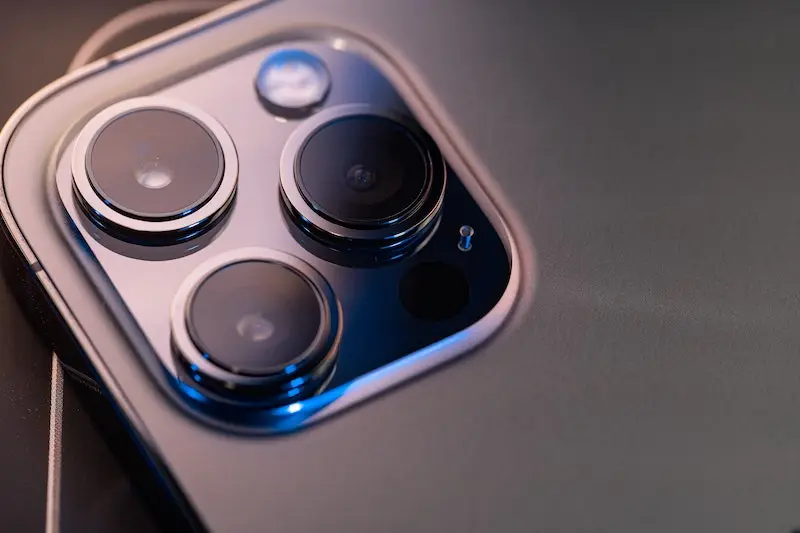Apple Photos is an Apple-edited photo management and editing software available on iPhone devices as well as Mac computers. Although its history is rather recent, the software has undergone rapid evolution since its creation in 2015.
The history of Apple Photos is part of the history of the Apple brand and its connection to photography on the one hand, and the constant new updates of the iPhone and Mac computers on the other.
Thus, to learn all about the history of Apple Photos, it is necessary to zoom in on Apple and the history of photography before looking at the different versions of the software that have been released since its creation until today.
Table of contents
Apple and photography: more than 15 years of history
Before taking a closer look at the evolution of Apple Photos, it is interesting to look back at the history of Apple and photography. Indeed, while Apple Photos is a recent software program created in 2015, Apple has been showing an interest in photography for much longer.
The 1990s: Apple and the digital age
The link between Apple and the history of photography is not new. Apple’s first attempt to break into the world of photography dates back to the 1990s.
During this period, the photography market was in full swing with the arrival of the first digital cameras. Apple released its own camera in 1994: the QuickTake 100. This digital camera was the first camera on the market for less than $1,000.
Equipped with a 640×480 pixel CDD sensor, it was possible to store eight images. A piece of information that brings on a smile when you consider the storage capacities of cameras and smartphones today.
2007: Apple launched the iPhone and ushered in the smartphone era
The Apple revolution took place in 2007 when Steve Jobs introduced the first iPhone. At the time, the smartphone did not exist. The Apple brand had just invented it, and to present it, it explained that this new device was at the same time a cell phone, an Internet device and an iPod.
Photography was not an important aspect of the iPhone when it was created, although it did have a rear camera with a 2MP sensor, which was revolutionary at the time. The following versions of the iPhone would continue to not really rely on the camera until the release of the iPhone 4.
2010: the iPhone 4, the first real smartphone camera
We had to wait for the release of the iPhone 4 in 2010 to see Apple take an interest in photography. With a 5MP rear sensor, Apple offered one of the best mobile photo qualities of the time while also introducing HD video (720p). At that time, the best TVs were only capable of 1080 p.
But the iPhone 4 didn’t just have a rear camera. For the first time, a 0.3 MP front camera was present.
Apple today: Always looking for the best photo quality
Since 2010, Apple has continuously improved its cameras to provide better photo quality with new versions of the iPhone. Each new smartphone represents the opportunity to benefit from a better camera.
The photo quality of the cameras on the iPhone is evolving rapidly:
- the iPhone 4s offered an 8 MP rear sensor;
- the iPhone 5 (2012) incorporated a 2 MP selfie (front) sensor;
- the iPhone 5s introduced the first 1080p recording;
- the iPhone 6s offered a 12.2 MP sensor and a 5 MP selfie sensor.
From the iPhone 6 onwards, the photo quality was no longer only improved thanks to the sensors, but also to other elements like stabilization, focal aperture, optical zoom, etc. So, the sensors of the iPhone XR, 11, 12 and 13 were still 12 MP, but the devices made other improvements to provide optimal photo quality.

The evolution of Apple Photos software
To accompany these devices (iPhone and Mac), Apple did not only count on selling increasingly sophisticated smartphones. To be able to process all the photos that its devices can take, Apple is developing its own photo management and editing application.
Very quickly, Apple Photos is evolving with new iOS updates and is perfecting itself to make it easy for larger numbers of people to process their photos. Focus on the evolution of Apple Photos.
2015: Apple Photos replaced iPhoto and Aperture
Apple Photos was created in 2015 with OS X Yosemite operating system update 10.10.3. It replaced two photo processing software programs previously available on Apple devices: iPhoto and Aperture.
Aperture was a software program designed for professionals with its numerous post-processing tools. The arrival of this new software disappointed many users because the new software did not offer as many features.
2016: iCloud and artificial intelligence enhanced Apple Photos
New features were quickly introduced to Apple Photos to satisfy more users. With the thirteenth version of Apple’s computer operating system (MacOS Sierra), two major new features were introduced:
- syncing of changes to an image on all devices connected to iCloud;
- artificial intelligence capable of recognizing elements on the image to group similar faces or facilitate searching.
The Memories feature was also a new addition to this version, allowing you to group all the photographs from the same event easily.
2018: New features with iOS 12 and macOS Mojave
Apple Photos software continued to improve with the release of iOS 12 and macOS Mojave in 2018 with new features:
- Sharing suggestions that offer to share photos of an event with the people who participated in it;
- A more advance search feature using keywords, people or places;
- The “For You” section, which includes souvenir movies, sharing suggestions and recommended photos.
So, Apple Photos evolves to allow better use of the application or software, without proposing new processing tools. At that time, Apple Photos was more of a photo management software than a photo processing software.

2019: iOS 13 and macOS Catalina brought new photo editing tools
We had to wait for the iOS 13 update for the iPhone and the Catalyna OS for Mac computers to take advantage of Apple Photos’ new editing features.
In particular, it was now possible to easily adjust the intensity, the contrasts, the brightness or the saturation of the images. A slider was also used to measure the intensity of the filters available in the software and the application. These features related to the appearance of the slider were also available for portrait mode.
In addition, iOS 13 now offered the possibility of accessing photos in the smartphone’s image library with new sections facilitating their management. Photographs are classified by day, month or year. This feature is very useful for when you want an overview of your photos taken in the same month or year.
2021: iOS 15 further improves photo management in Apple Photos
In 2021, iOS 15 was released, which brought more new image management features. Each photograph now contains a lot of information (type of smartphone used, lens, shutter speed, dimensions, place and date, etc.).
Apple Photos is now a very complete software and application that allows you to easily sort your photos. The software is still light on editing features, even though it is possible to do basic image processing very easily and very quickly.










